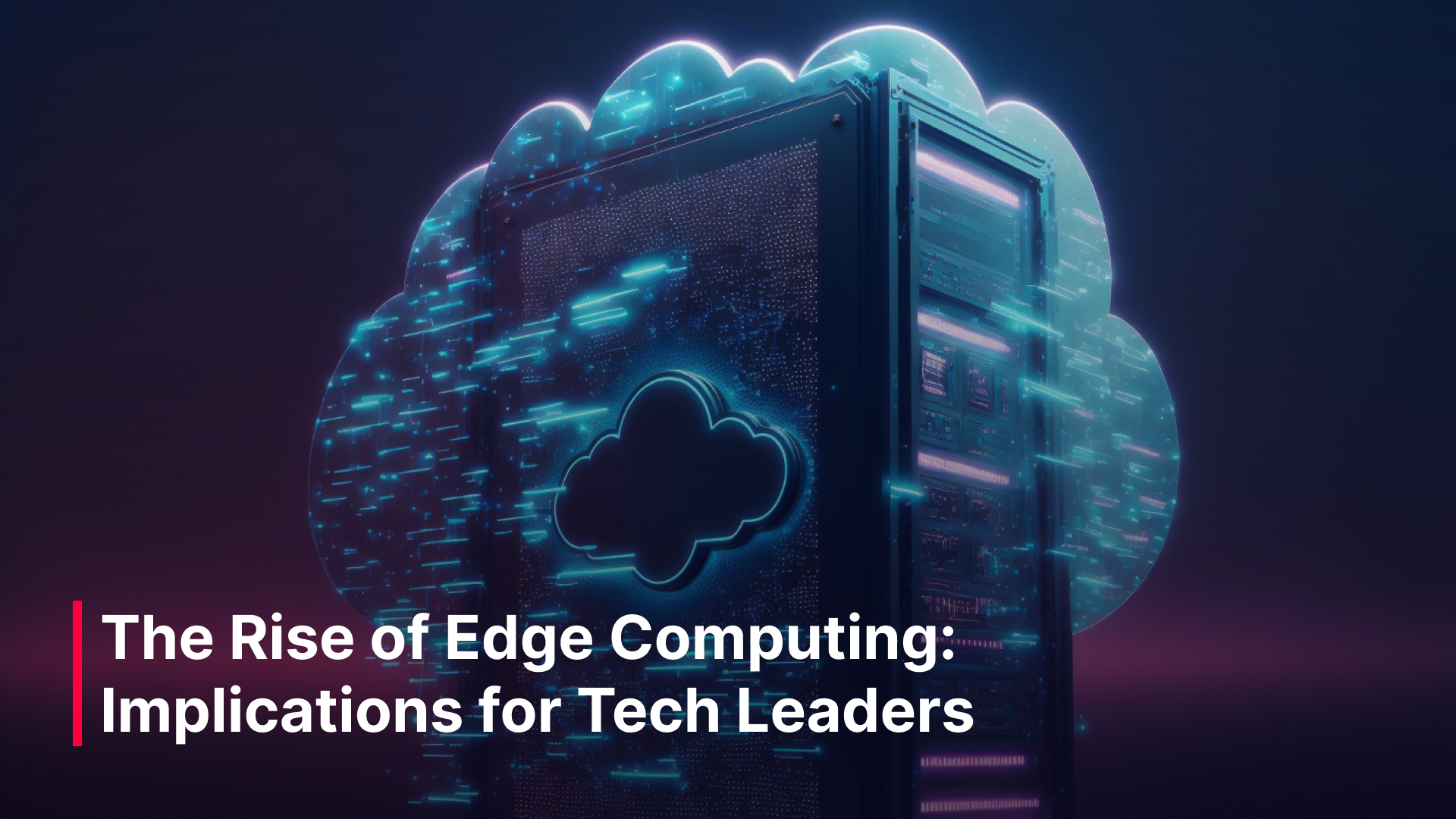Let’s talk about edge computing – tech evolution is not linear, and the last few years have reshaped industries and redefined innovation paradigms.
Just as quantum computing has emerged as a tool of revolutionary potential, edge computing stands at the forefront of the next wave of technological transformation, presenting unique challenges and opportunities for forward thinking tech leaders.
The Edge Computing Evolution
Edge computing represents a fundamental shift away from centralized computing models, bringing data processing closer to the source of data generation. This paradigm shift is driven by the increasing proliferation of IoT devices and the need for real-time processing capabilities that cannot be met by traditional cloud computing models due to latency and bandwidth constraints.
If you’re aiming to stay competitive and to intentionally leverage innovation in your organization, the integration of this emerging tech into business and product strategies is a strong option that’s worth considering. And since inertia and growth don’t go together, we’ll first look at the competitive advantages that you could potentially integrate:
- Reduced latency – by processing data closer to the source of its generation, edge computing significantly reduces latency compared to cloud computing, where data must travel to a centralized data center. This is critical for applications requiring real-time processing and analysis, such as autonomous vehicles, real-time analytics, and IoT devices. Lower latency ensures faster response times, which can be a decisive factor in the performance and reliability of many modern applications.
- Bandwidth optimization – transmitting large volumes of data to the cloud can strain bandwidth and increase costs. Edge computing alleviates this by processing data locally, reducing the need to send all data to a central data center. This is particularly advantageous for organizations that operate in bandwidth-constrained environments or where data transmission costs are a concern.
- Enhanced security and privacy – processing sensitive data locally, rather than transmitting it across networks to a cloud server, can reduce exposure to data breaches and cyber-attacks. Edge computing allows for more controlled and secure data processing environments, offering an additional layer of security for handling sensitive information. Furthermore, it supports compliance with data sovereignty and privacy regulations by allowing data to be processed within its geographic origin.
- Reliability and resilience – by decentralizing the processing and storage of data, edge computing minimizes the dependency on a single central network or data center. This enhances the overall resilience of IT systems, as local data processing can continue uninterrupted even in the event of network failures or connectivity issues, ensuring continuous operation of critical applications.
- Scalability and flexibility – edge computing allows organizations to scale their IT infrastructure more flexibly by adding edge devices and processing power locally where needed, rather than expanding centralized data centers. This enables a more cost-effective and efficient way to scale applications and services in response to demand.
- Personalized and contextual services – for customer-facing applications, edge computing enables the delivery of more personalized and context-aware services. By processing data locally, applications can respond to user behavior and environmental factors in real-time, offering tailored experiences that can significantly enhance customer satisfaction and engagement.
- General innovation and new opportunities – the capabilities of edge computing open up new possibilities for innovation in product and service offerings. For example, businesses can develop new applications that were previously not feasible due to latency or bandwidth limitations, such as advanced AR/VR experiences, sophisticated on-site analytics, and more interactive and responsive smart city infrastructure.
These benefits are particularly relevant in industries such as manufacturing, with smart factories leveraging edge computing for real-time monitoring and predictive maintenance; retail, where personalized shopping experiences can be powered by edge technologies; and healthcare, where edge computing can facilitate real-time patient monitoring and telemedicine services.
Navigating the Edge Computing Landscape
The successful adoption of edge computing requires a multifaceted strategic approach. As a tech leaders, these are the steps we’d recommend you take:
- As always, start with identifying key use cases – just as with quantum computing, identifying and prioritizing use cases where edge computing can deliver significant value is crucial. This could range from IoT applications and autonomous vehicles to AR/VR experiences and beyond.
- Invest in infrastructure and talent – building or upgrading infrastructure to support edge computing and investing in talent with expertise in edge-specific technologies are essential steps. Collaboration with technology providers and industry consortia can help mitigate these challenges.
- Look out for integration options – integrating edge computing into existing IT ecosystems must be done with an eye towards interoperability and minimizing disruption. This involves careful planning around data management, security protocols, and application deployment strategies.
- Foster a culture of innovation – while new tech capabilities should bring tangible benefits, encouraging a culture that embraces experimentation and continuous learning is vital for navigating a competitive industry. This includes staying in touch with emerging trends and partnering up with the right kind of agents.
The Future Is on the Edge
The future of edge computing is rich with potential, and it could even redefine how data is processed, analyzed, and used across industries.
This emerging technology can be a frontier of technological innovation that demands a proactive and strategic approach.
In essence, it is a strategic enabler that can redefine the competitive landscape. For organizations willing to embrace this shift, the edge offers a new world of possibilities for innovation, efficiency, and customer engagement.


